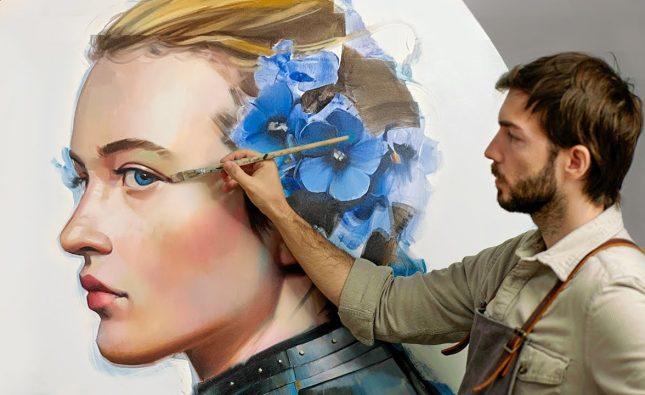
Miniature art has been around for centuries, with examples dating back to ancient Egyptian and Roman. However, it wasn’t until the 16th century that miniature art became popular in Europe, particularly in England. Miniature portraits were highly sought after by the wealthy and aristocratic, and were often used as tokens of love or friendship.
Today, miniature art has evolved beyond just portraits and has become a versatile medium for artists to express their creativity. From dollhouses to dioramas, miniature art has found its way into various forms of art and has become a popular hobby for many.
Dollhouses, for example, have been a popular form of miniature art for centuries. These tiny homes are often meticulously crafted with intricate details, from the furniture to the wallpaper. Dollhouses can be made to replicate real-life homes or can be completely fictional, allowing the artist to let their imagination run wild.
Dioramas, on the other hand, are miniature scenes that depict a particular moment in time. These scenes can be historical, fictional, or even fantastical. Dioramas are often used in museums to showcase a particular event or period in history, but they can also be created as a form of art.
Miniature art has also found its way into the world of jewelry making. Miniature sculptures can be made into pendants, earrings, and even rings. These tiny pieces of art can be incredibly detailed, with some artists even incorporating moving parts into their designs.
Another popular form of miniature art is model making. Model makers create miniature replicas of everything from cars to airplanes to buildings. These models can be incredibly detailed, with some even featuring working parts such as engines or lights.
The versatility of miniature art is what makes it so appealing to artists and hobbyists alike. It allows for creativity and imagination to run wild, while also requiring a great deal of skill and attention to detail. Whether it’s a dollhouse, diorama, piece of jewelry, or model, miniature art has the ability to captivate and inspire.
In conclusion, miniature art has come a long way since its early days as a form of portraiture. From dollhouses to dioramas, miniature art has found its way into various forms of art and has become a popular hobby for many. Its versatility and ability to capture the imagination make it a timeless art form that will continue to inspire for generations to come.










